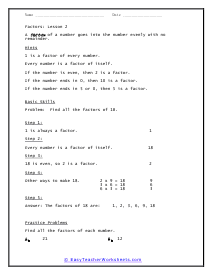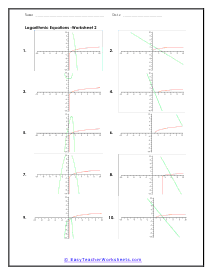

Math Worksheet Categories
Just scroll down and click on the math topic of your choice.

Addition
Students start by adding visual sums, we also get a jump from using number lines to really help it sink in. This helps them progress towards single, double, and triple digit addition.

Addition and Subtraction
This section helps students quickly see how these operations complement and cancel one another out. We also look at how to determine missing operators.

Algebra
This is a humongous section of our site. We have basic to very complex algebra worksheets available. You will also find algebraic representations and the transition from algebraic to linear systems available here.

Area and Perimeter
Find these measures on all types of different shapes. We also open you up to a wide range of critical thinking and real-world problems.


Connect the Dots
A great way to help students have a positive experience with natural numbers. Not to mention it really helps their counting and sequence skills.

Counting
Great for practice, but we offer a few counting puzzles that will really interest students.

Decimals
These are some of our most popular lessons because we offer a step-by-step approach from introducing decimals to using them in large scale operations.

Division
These worksheets do a great job of explaining remainders to students. We approach it as a form of repeated subtraction.

Equations
We look at all aspects of the using and solving of equations. Learn how to write your own to mirror a situation.

Estimation
We explore how this should not be considered guessing. It is more about being as accurate as possible.

Exponents
We show students how to use them in the process of operations and the concept of negative and positive values.

Expressions
Learn how to write your own expression to help you solve word problems. You will learn how to evaluate, simplifying, and compound expressions.

Factoring
We learn the applications of factors and how perform prime factorization. You will also learn how to rewrite values by using factoring.

Fractions
One of largest categories. The work ranges from very simple modeling with fractions, equivalent values, and then advances to complex used of mixed numbers.

Functions
This series of worksheets models functions on graphs and teaches you to recognize and evaluate functions.

Geometry
This covers the complete curriculum in middle school and high school. We kind of go a bit overboard on angles in this section.

Graphing
We help you learn to create, read, and interpret all major form of graphs including: bar, coordinate, frequency tables, histograms, line graphs, line plots, picture graphs, pie (circle), scatterplots, steam and leaf, and tally charts.


Inequalities
Learn how to use an inequality to model and predict outcomes to common problem you come across.

Integers
This is an awesome section with all kinds of different uses of integers from labelling them to understanding their value prior to throwing them through a math operation.

Kindergarten Math
All these sheets are grade leveled and can be used for practice or outright teaching.


Logic
We look at all the major uses of this form of math including conditionals, conjunctions, disjunctions, converse, inverse, truth values, and interpreting Venn diagrams.

Math Centers
We give you an overwhelming number of ideas for math centers with your students at all grade levels.

Math Organizers
A whole bunch of printable sheets that make your workflows through problems easier and better organized.



Measurement
We cover just about everything unit conversion, the metric system, measurement standards, the tools of measurement and how to read them.


Money Math
How do you count dollars and coins? How do you calculate interest? How do you convert values of money?

Multiplication
We introduce the basic concept and present it as repeated addition. We expand to performing long multiplication.



Patterns
Learn how to find patterns in colors and shapes. We then apply this to patterns in math sequences.

Percentages
We look at how to easily convert between fractions, decimals, and percentages. We also apply this to percentage of change and of numbers.

Pi Day
On March 14th (Get it? 3-14) we celebrate what pi has done for us when it comes to circle geometry.

Place Value
Learn all the main place values that are commonly used in math and how to convert between expanded and standard forms of values.

Polynomials
We look at how to perform basic operations between them and how to graph and apply them to word problems.


Properties of Numbers
You remember these guys associative, commutative, and distributive. We also look at the division principle.

Quadratic Equations
What are they? A look at the components and how to solve them algebraically and graphically.

Ratios and Proportions
This is a surprisingly long section that is dedicated to finding equivalents and compare ratios. We also look at trigonometric ratios.


Statistics and Probability
This is a full blow section that includes all forms of analyzing data and calculating probabilities and likelihoods of events.


Time
Learn how to tell time on an analogy clock, how to use a calendar, and perform arithmetic with time.


Word Problems
I consider this section to be what math is all about solving problems that require you to truly understand how math is useful.
Why Do Math Worksheets Play a Vital Role (In Learning Math)?
Learning math is an integral part of any school's curriculum because it helps stimulate the development of soft skills such as critical thinking, creativity, reasoning, complex communication, time management, and organization.
Math is pertinent for expressing all ideas since this subject encompasses our day-to-day life; from telling someone your phone number to paying for your groceries would have been impossible without having a sound foundation in math. Moreover, some careers like banking, software development, STEM fields, etc., heavily depend on these same skills. This is precisely why math is one of the most valuable and vital subjects.
The Importance of Worksheets
You may have noticed that most e-learning websites such as 'Khan Academy' or 'Coursera' always include a worksheet at the end of a topic. Schools and e-learning websites encourage students of all ages to solve worksheets. It promotes the understanding and learning of addition, multiplication, etc., alongside more complex concepts such as calculus, etc.
Moreover, worksheets are crucial in the promotion of learning mathematical concepts. The other advantages of using a worksheet in a classroom for math are the following:
Develop An Interest in The Subject
Counting on its own can be pretty tedious for a child. However, introducing that same concept in a 'join the dots' worksheet can become a much more involved and creative opportunity to progress a child's learning. Worksheets with illustrations are mainly of interest to children. They can even help promote teaching concepts such as addition, subtraction, multiplication, and division by visualizing word problems or situations.
Serve As a Take-Home Learning Opportunity and Strengthen Concepts
Children and adults have a limited attention span, and math class can drag on with explanations with little to no time left for in-class practice. Worksheets can help alleviate the burden or strain students might feel in class and allow them to continue their learning with more focus. This can aid in learning concepts and is particularly helpful for students struggling with the subject or taking more time to develop a complete understanding of concepts.
Improve Time-Management Skills and Reduce Exam Fear
Worksheets with a recommended time suggestion help students understand how to allot time to each question and can help improve their time-management skills. Worksheets like these can also introduce students to the questions they can expect in the exam paper. Both these combined serves to reduce exam fear among students by allowing them to practice one. You can also use the vast number of practice charts that are available across the Internet.
Help Identify Shortcomings and Areas of Improvement
Mixed problem worksheets that combine a collection of concepts test a student's ability to tackle different questions and are a perfect way for students to understand where they stand. These can help identify areas of shortcoming and allow students to allocate their study time in the most efficient way possible.
Finally, it could be inferred from the reasons mentioned above that, to learn math productively, the use of worksheets is essential. The specific number of problems and the variety of formulas for each topic in a separate worksheet serves as the material for notes needed in math. This is the much-needed attention to ensure the deliverance of a lecture.
Math is a pretty popular topic for teachers. Here is a cool little trick, square the number 111,111,111 and see what the outcome. Pretty cool huh? You will find this to be one of our biggest sections of worksheets and we are constantly adding new sheets too.


